Trips:
The Valley of Umbria
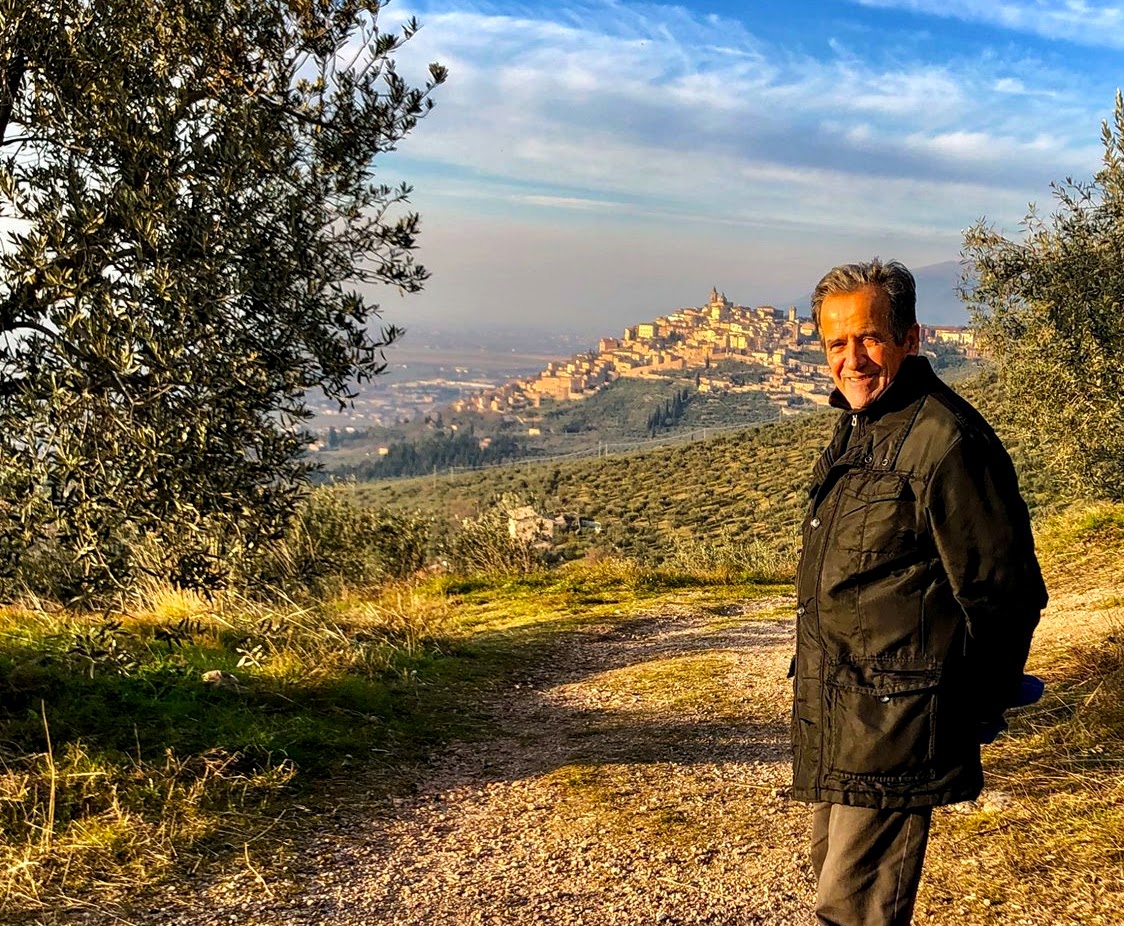
Walking in the Land of Saint Francis
Tribes of Umbrians and Etruscans dominated Umbria until the ambitious Romans displaced them in the third century BC, building walled towns with theaters, temples and aqueducts. Their Via Flaminia (map: blue with red variant) connected Rome with the northern Adriatic coast, passing through the Valley of Umbria (in the square).
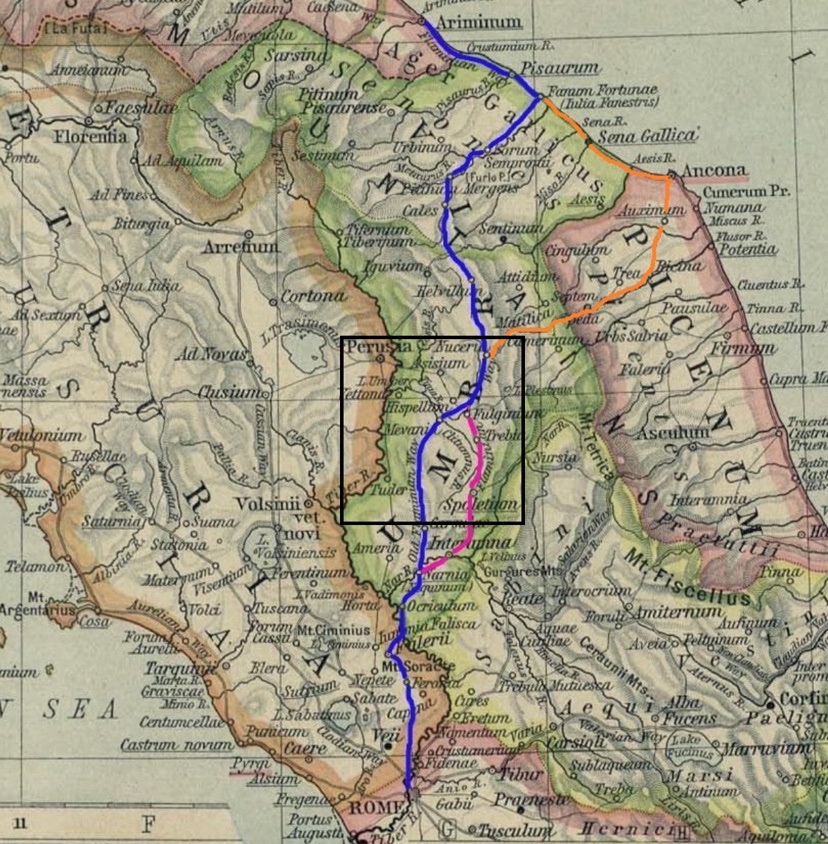
When Rome fell in the 5th century the world grew dark; waves of invaders poured in. In the next century the Lombards founded the Duchy of Spoleto and restored a degree of order in Umbria. By the 8th century they controlled much of Italy, alarming the Pope. At his request, Charlemagne, king of the Franks, stepped in and defeated the Lombards. The grateful Pope crowned him Roman Emperor, reviving the old title.
But there were unintended consequences: the new Holy Roman Empire evolved into medieval Europe’s most powerful state, ironically a bitter rival of the Pope. Mayhem ensued: factions supporting the two sides battled for centuries. Their fortifications remain a characteristic of Umbria today.
Amid this turbulence, a disillusioned young soldier from Assisi named Francis renounced violence and established religious orders based on poverty and humility: qualities not then in vogue within the Roman Church.
The towns

Spoleto (Roman Spoletum)
Roman Spoletum was a large town with a theater and amphitheater; the forum, on the Via Flaminia, remains the market square today. In 570 AD the Lombards founded the Duchy of Spoleto, which remained a political power for over a thousand years. In 1499 Pope Alexander VI named his daughter Lucrezia Borgia governor of the Duchy; she resided briefly in the Rocca Albornoziana fortress. Our walk through the wooded hills above town offers magnificent views of the fortress, the medieval aqueduct and the valley of Umbria below.
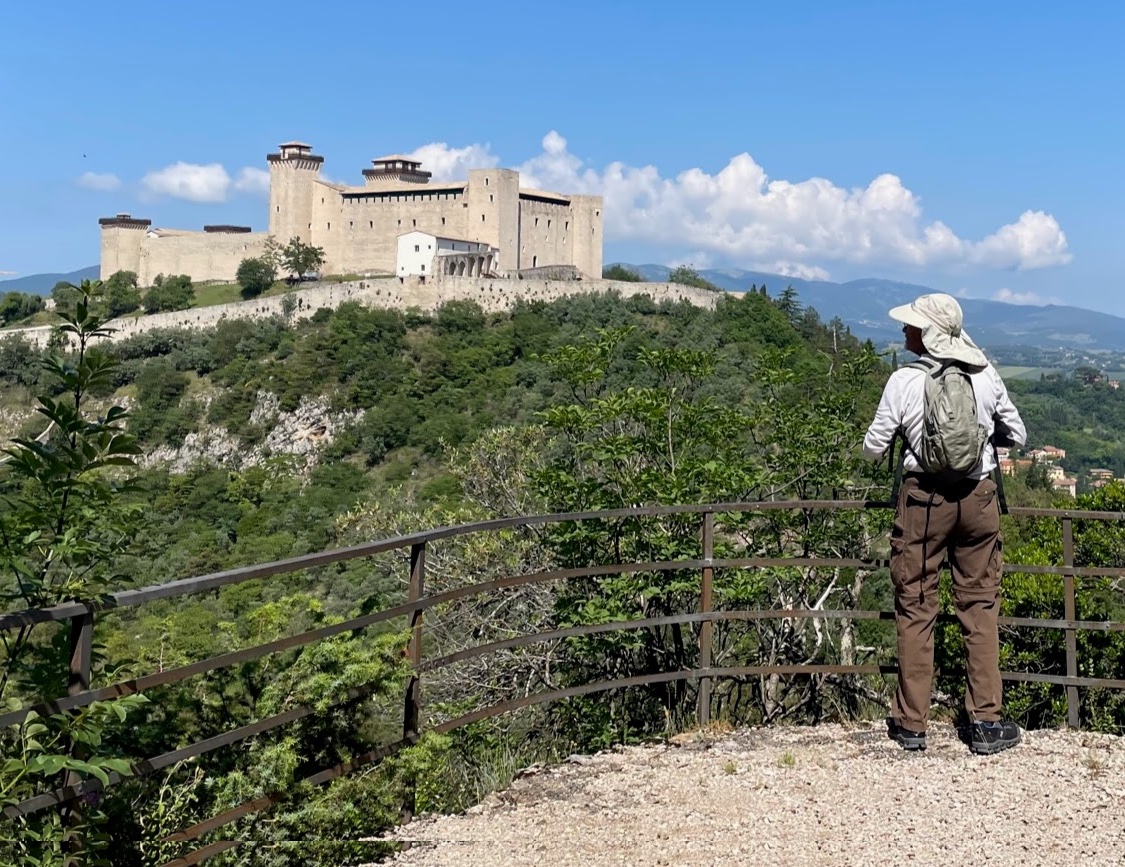
Spoleto’s Duomo is one of Italy’s most beautiful churches, with works by Pinturicchio and Fra Filippo Lippi, who is buried inside. Spoleto is internationally known for the Festival of Two Worlds, a summer music event established in 1958 by Italian-American composer Gian Carlo Menotti. We’ll also visit a Roman house with well-preserved mosaics.

Valnerina (valley of the Nera River)
Colorful hill-towns overlook the crystal-clear Nera River in the valley just east of Spoleto. Hemp production dominated the economy here until the mid-20th century. Rough textiles, fine linens, rope, fishing nets, and animal feed were among its uses. Our morning walk connects the towns of Scheggino, Sant’Anatolia di Narco and Castel San Felice. We visit the surprisingly stylish Hemp Museum and enjoy lunch at a farm where saffron and organic fruits and vegetables are harvested.
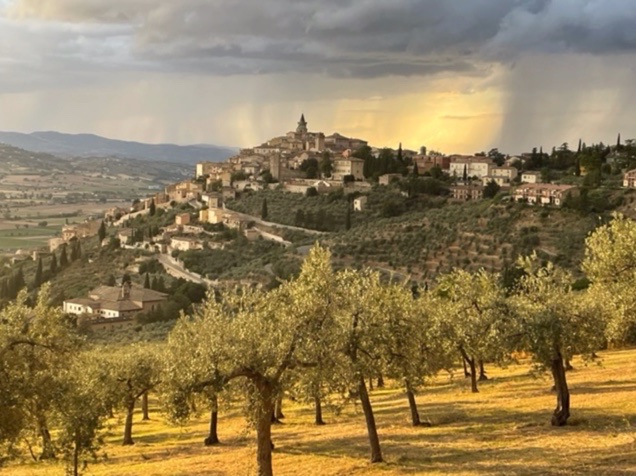
Trevi (Roman Trebia)
Roman Trebia overlooked the Via Flaminia from a hilltop. Today Trevi is known for olive oil, truffles and the unusual black celery, celebrated with an festival every October. We’ll explore the narrow streets that spiral up to the summit, where a Roman temple has been replaced by a Romanesque cathedral. The Church of Madonna delle Lacrime has a painting by Perugino a leading painter of the Umbrian school and a teacher of Raphael.

Bevagna (Roman Mevania)
Roman Mevania was a small but wealthy town. Today it’s surrounded by medieval walls, and known for fine cashmeres, ceramics and other handicrafts. After exploring the town we enjoy an aperitivo and dinner.
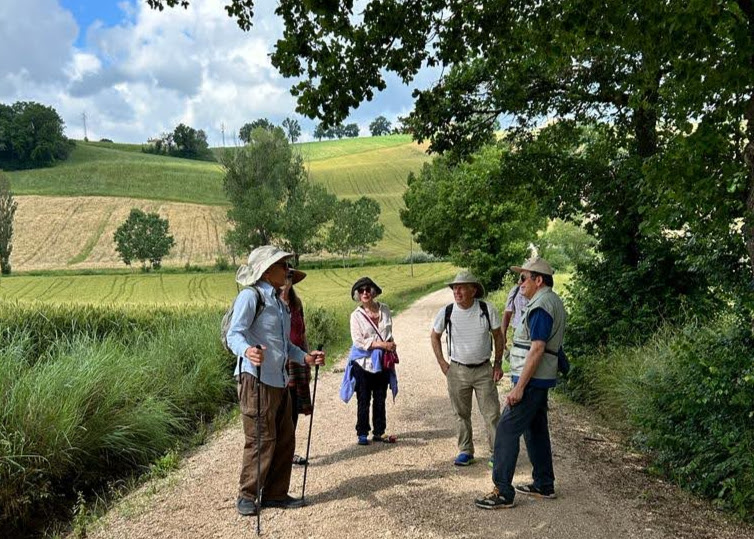
Montefalco
Montefalco boasts vineyards producing some of Italy’s best-known wines, such as Sagrantino di Montefalco. After a morning vineyard walk we enjoy a wine-tasting lunch at the celebrated Le Cimate Winery. In the evening we visit the center of Montefalco, which features a beautiful piazza and spectacular views of the valley below. Montefalco is renowned for table linens and the San Francesco Art Museum, with works by Perugino and Gozzoli.

Spello (Roman Hispellum)
A remarkably picturesque hill town with Roman walls and gates, Spello has become a prime choice for foreigners to settle. Shops display beautiful local ceramics and other crafts. After our walk along a small Roman aqueduct in the hills, we explore town’s charming labyrinth of winding streets.
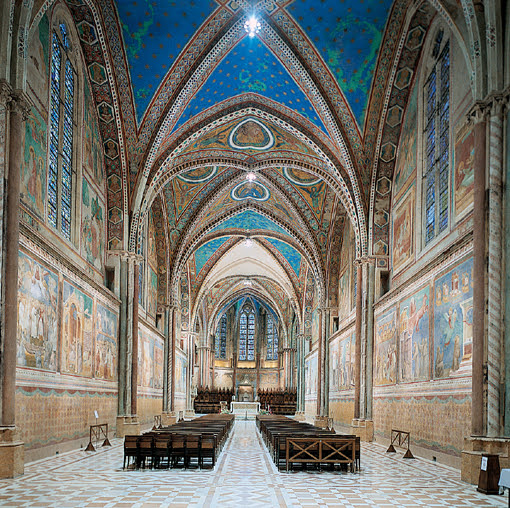
Assisi (Roman Assisium)
Saint Francis was born in Assisi and is buried in the basilica bearing his name. This two-level church contains more famous paintings than you can count. The proto-Renaissance master Giotto’s remarkable cycle of the life and death of Francis dominates the upper church. His teacher Cimabue is featured on both levels. In the morning we visit the church and explore the town. Assisi is well-to-do, clean and charming: galleries, shops with fine handicrafts and, somewhat ironically, elegant women’s clothing. After lunch we visit the birthplace of Francis, the lovely Basilica of Saint Clare, and the tranquil hermitage where St. Francis lived in the wooded hills above town.